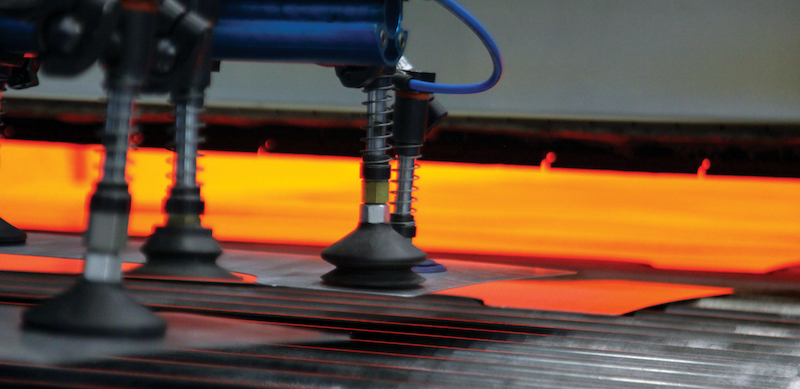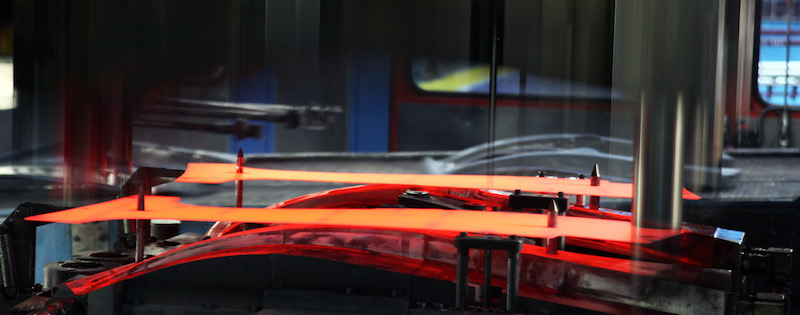Big data technology has enabled Gestamp to tackle energy consumption at several of its plants and, crucially, closely observe just how equipment behaves in operation
 Back in 2014, Gestamp resolved to address a noted upturn in its energy consumption. The Spain-based company specialises in designing, developing, and manufacturing metallic assemblies and components for OEMs. While its core business isn’t considered as energy hungry as some other automotive sectors, its sheer size means that consumption was a significant consideration.Gestamp operates 97 plants across 20 countries, with more under construction and coming on stream. With its 12 R&D centres too, its global workforce numbers 34,000. The company doesn’t only produce parts but co-develops them with the OEMs, so there is always a focus on being where the customers are.
Back in 2014, Gestamp resolved to address a noted upturn in its energy consumption. The Spain-based company specialises in designing, developing, and manufacturing metallic assemblies and components for OEMs. While its core business isn’t considered as energy hungry as some other automotive sectors, its sheer size means that consumption was a significant consideration.Gestamp operates 97 plants across 20 countries, with more under construction and coming on stream. With its 12 R&D centres too, its global workforce numbers 34,000. The company doesn’t only produce parts but co-develops them with the OEMs, so there is always a focus on being where the customers are.
Over the past three years, its project partnership with Siemens has helped to develop a cloud-based energy management platform aimed at addressing the energy consumption concerns that emerged in 2014. In a practical demonstration of Industry 4.0, Gestamp has managed a 15% reduction in energy consumption across an international network of participating plants. Rene Gonzalez, Gestamp’s equipment standardisation and advanced manufacturing director, has helped to shape and implement the system which is now operational in 14 plants.
“This represents almost 45% of our energy consumption. We are not as intensive as some other industries but we are a large company. So the consumption across all the plants was an important part of Gestamp expenditure. But there was no global approach to energy efficient measures.”After taking the decision in 2014 to take on a pilot system with Siemens, there were many issues to consider and problems to solve.
Gonzales says, “Through our own internal index we detected that our consumption was increasing in relative terms. That was due mainly to the introduction of hot stamping technology – brought in to provide lighter and safer parts to our OEM clients – but clearly the process is more energy intensive than conventional cold stamping. This is the reason, along with our commitment to lower emissions, that Gestamp wanted to address the trend.”
Global projectGestamp launched the iniative as a global project, with full commitment from its president and CEO and a brief to demonstrate clear governance. This gave Gonzales and his colleagues the resources to investigate and learn from the activities of 97 plants, worldwide. The standards and best practice that emerged could then be shared. “We selected plants that would best develop the pilots. And once the pilots demonstrated value to the business we extended them to other plants. As well as monitoring consumption energy, we wanted to know the behaviour of the equipment. That idea is so important.”
“I always feel that the heart of the project is the EMS. The project is more than the system but the system tells us the behaviour of the equipment. Without knowing the behaviour you cannot quantify improvements.”
When Gestamp decided to go with the Siemens system, the features required were totally clear, as Gonzales explains: “What we wanted was software as a service, a big data approach, an easy model to implement, a web platform for a real-time tool, open to any user anytime and anywhere, with no licence fees.”
Big data was important – in a conventional, low-resolution system, Gestamp could chart energy consumption with one point every hour or every 15 minutes – even every one minute – to measure energy usage.
However, with big data gathering and a resolution in some cases as regular as one second, the new system provides a clearer view of the equipment behaviour.
That’s what is useful to see. Not just the consumption. For example, analysing the behaviour of the fixed and variable compressors – and how they are working in tandem – shows up any redundant sequencing, which can be addressed, optimised and thus create significant energy savings.
The initial phase of the platform has been implemented in Gestamp’s production plants in Spain, Germany, UK, France and Poland.
Gonzales explains: “We chose the plants with large consumption but also that are in countries with higher energy prices. We are planning to extend the project through 2017 to nine new plants in Europe.”
There are also plans to push the project out to 30 plants, including China and the US, before the end of 2017.
Real-time monitoringThe platform makes it possible to monitor real-time energy consumption needs across the network of factories and to connect their infrastructure to the cloud. The results are available instantaneously, viewable via a series of dashboards and animated graphic interfaces. It’s a tool that allows Gestamp to define algorithms based on the consumption patterns to raise alerts about the energy malfunctions of the equipment. The data can be processed through analytics tools to guide predictive maintenance, manage production processes or to forecast energy usage based on future production requirements.
As Gestamp’s corporate information system director Pablo de la Puente explains, the project on energy efficiency is how the company itself sees its future.
He says, “IT systems, in the past, were a service for us. Nowadays, we want to be leaders in technology because we think that with all things related with the cloud, with our operations and with big data, this is all important information to drive the company.”
 De la Puente describes the two different axis in the Gestamp strategy, efficiency and quality. “If we can have zero defects for our customers we have no reputational issues across our three ongoing projects.”
De la Puente describes the two different axis in the Gestamp strategy, efficiency and quality. “If we can have zero defects for our customers we have no reputational issues across our three ongoing projects.”
“In hot stamping, we are analysing the process to get real-time monitoring based on big data with algorithms. Plants are providing results from which we can improve their efficiency. Another area is logistics, where we are connecting operators in logistics areas around the plants to optimise internal functions through task prioritisation. This includes stock monitoring, warehouse space availability and improving plant layouts.”
“In hot arc welding, a complex technology, we put the focus on traceability and monitoring all parameters of the process.”
Gestamp is implementing different systems, checking large amounts of data every 100 milliseconds to try to understand how the assets, the robots, the laser welding are behaving.
The aim to provide a focus on adding value to the plants, providing the best information – not for the management, De la Puente says: “...but to the people driving the lines and processes.”The energy efficiency platform is managed by Siemens from its Smart Grids Control Centre in the Seville, Spain. Ultimately, the aim is to model the behaviour of the equipment so that it operates as efficiently as possible and in a coordinated way.
Gonzales concludes: “Looking back at this period I have to say we have a powerful system that meets our expectations and also, most importantly, which allows us to control consumption and save energy.”
System features
• Early detection of machinery faults• Preventive and corrective maintenance• Real-time monitoring via a web portal• Personalised reports• Transparency of costs and processes• Detection of inefficient processes• Algorithms based on data analytics to detect and warn• inefficiencies and malfunctions in equipment• Project easy to deploy. Service provided to all selected• plants.
Project Outline
Plants
•Once the Monitoring System is running, the plant is involved in the Energy Efficiency Initiative
•Set annual objectives in the reduction of the consumption together with corporate
•Implement improvements
•Take advantage of the advice and support received from corporate
Corporate
•Develop deep knowledge in our production technologies to create standards within Gestamp
•Researching of new improvement options. Define standards and gather best practices.•Sharing knowledge and experiences within Gestamp Group. EE Community•Definition of patterns and algorithms to control wrong behaviour
Breakdown of savings achieved
Gas usage 15%Technological development 7%VSDs 9%Lighting 19%Production process optimization 28%Compressed air 19%Other 3%
More than 130 measures implemented10% (GWh) energy consumption reducedLess than 1.5 year paybackCO2 reduction: 14,000 tonnes
































